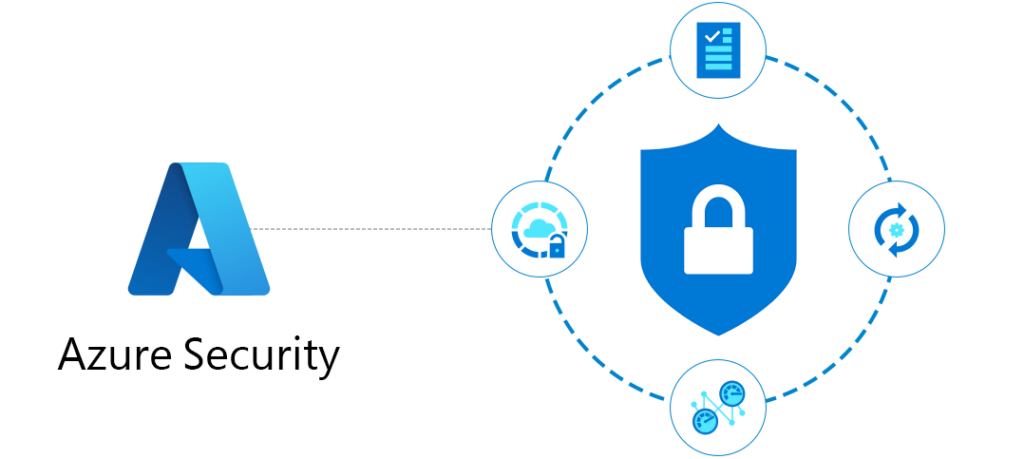Ensuring strong security measures for cloud platforms such as Microsoft Azure is critical in today’s digitally connected society. Azure offers a full range of services and solutions that are intended to protect your infrastructure, apps, and data from constantly changing cyberthreats. This blog discusses recommended procedures and necessary resources to enable you to efficiently optimize security on Azure.
Importance of Security in Azure
Microsoft Azure’s security system offers numerous levels of defense against a variety of cyber threats, including as malware, illegal access, and data breaches. It is based on industry standards and best practices. Firm security measures can help organizations reduce risks, stay in line with regulations, and gain the trust of their clients.

Best Practices for Azure Security
Implementing a holistic approach to security on Azure involves leveraging best practices across various dimensions:
- Identity and Access Management (IAM)
- Use Azure Active Directory (AAD): To centrally control user identities and access to Azure resources, implement AAD. For extra protection, implement multi-factor authentication (MFA).
- Principle of Least Privilege: The principle of least privilege states that in order to lower the possibility of unwanted access, users should only be granted the minimal amount of permissions required to do their responsibilities.
- Network Security
- Virtual Networks (VNets): Utilize VNets to manage incoming and outgoing traffic using Azure Firewall and Network Security Groups (NSGs) and to conceptually isolate Azure resources.
- Private Link: Securely access Azure services over a private endpoint within your VNet to avoid exposure to the public internet.
- Data Security
- Encryption: Use Transport Layer Security (TLS), Azure Storage Service Encryption, and Azure Disk Encryption to encrypt data both in transit and at rest.
- Azure Key Vault: Use Azure Key Vault to protect certificates, cryptographic keys, and secrets that are utilized by cloud services and applications.
- Application Security
- Secure Development Lifecycle (SDL): To create secure apps, adhere to SDL guidelines. For continuous integration and delivery (CI/CD) pipelines with integrated security controls, use Azure DevOps.
- Web Application Firewall (WAF): Use Azure WAF to defend web applications against frequent threats and weaknesses.
- Monitoring and Logging
- Azure Monitor: Gather, examine, and respond to telemetry data from Azure resources with Azure Monitor. Configure alerts to be notified about security events or questionable activity.
- Azure Security Center: Gain centralized visibility into the security posture of your Azure environment. Monitor security recommendations and implement security policies.
Essential Security Tools on Azure
Azure offers a range of specialized tools to enhance security posture:
- Azure Sentinel
- Intelligent security analytics and threat detection with cloud-native SIEM (Security Information and Event Management) and SOAR (Security Orchestration Automated Response) services.
- Azure Security Center
- Unified security management and advanced threat protection across hybrid cloud workloads. Provides security recommendations and continuous monitoring.
- Azure Active Directory (AAD)
- Identity and access management solution that provides secure single sign-on (SSO) and multi-factor authentication (MFA).
- Azure Firewall
- A managed firewall that is available as a service to safeguard Azure Virtual Network assets.
- Azure DDoS Protection
- Provides high availability of Azure services by guarding against Distributed Denial of Service (DDoS) assaults.
Steps to Enhance Azure Security
- Evaluate and Plan
- To identify risks and rank security measures according to your company’s needs and compliance requirements, conduct a security assessment.
- Implement Security Policies into Practice
- To guarantee uniform compliance throughout your Azure environment, define and enforce security policies using Azure Policy.
- Educate and Train
- To foster a culture of security inside your company, give stakeholders and staff security awareness training.
- Monitor and respond
- Keep an eye on security records and alarms at all times. Create incident response protocols and carry out routine security evaluations and audits.
Conclusion
A proactive strategy combining strong security tools, ongoing monitoring, and best practices is needed to secure your Azure environment. Businesses can successfully safeguard their assets and uphold consumer trust by implementing a layered security plan, utilizing Azure’s inbuilt security features, and keeping up with developing threats. Take use of Azure’s security features to strengthen your cloud architecture and traverse the digital world with increased compliance and resilience.
